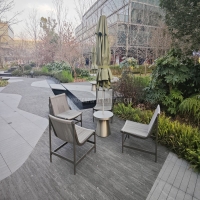Welcome to the website for landscape facilities products and knowledge.
What are the fire-resistant properties of materials used in landscape round trash cans, and how are they tested?
Landscape round trash cans are often exposed to outdoor elements, including potential fire hazards like discarded cigarettes or nearby flames. To enhance safety, manufacturers use fire-resistant materials such as treated metals, high-density polyethylene (HDPE), or fiberglass reinforced with flame retardants. These materials are designed to resist ignition, slow flame spread, and self-extinguish when the heat source is removed.
Testing methods for fire resistance typically follow industry standards like ASTM E84 (Surface Burning Characteristics) or UL 94 (Flammability of Plastic Materials). In ASTM E84, a sample is exposed to controlled flames to measure flame spread and smoke density. UL 94 involves vertical or horizontal burning tests to assess how quickly a material extinguishes after ignition.
For landscape applications, trash cans may also undergo real-world simulations, such as exposure to embers or direct flames, to ensure compliance with municipal safety regulations. Proper fire-resistant design not only prevents accidental fires but also aligns with urban safety standards for public spaces.
By selecting materials with certified fire-resistant properties and rigorous testing, manufacturers ensure that landscape trash cans contribute to safer, more durable outdoor environments.
Related search:

Recommendation
Metal structure rattan chair without armrests for single person, with woven seat and backrest.